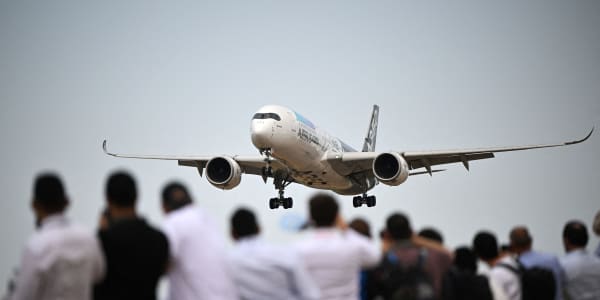
Two years ago we saw $204 billion change hands at the Farnborough International Airshow. As one of the premier events in the Aerospace and Defense calendar draws near and the industry prepares to descend on the Hampshire airfield, what are some of the key trends that are set to dominate discussions on the show floor?
Withstanding supply chain pressure
The global A&D market is continuing to gain strength; driven by further increases in passenger demand. Much of this growth is focused in Asia Pacific and the Middle East as the growing affluent middle classes and their thirst for travel is set to drive 6 percent growth in the $738 billion airline industry over the next few years. Entrants looking to take advantage of new opportunities in these regions will certainly be making themselves heard on the floors of Farnborough.
But with major backlogs being reported by Boeing and Airbus over the next decade, the pressures on the supply chain will be huge. Suppliers are already struggling to keep pace with the surge in demand, resulting in billions of dollars' worth of inventory sitting in the parking bays. This has already played out in dramatic fashion this year in the interiors market, with a default by a major OEM (Original Equipment Manufacturer). But this is indicative of the pressures felt across the wider supply chain.
As a result, we expect to see lots of discussions at Farnborough around how companies can better manage the supply chain through risk sharing partnerships. There will also be plenty of acquisition announcements, as OEM's look to take greater ownership over their supply chains.
Zero defect and supply chain
The dramatic rise in airliner demand is having another impact on the A&D supply chain that will be front of mind for companies attending Farnborough: zero defect manufacturing. The words on everyone's lips will be: quality, quality, quality.
We've seen the cost to airlines and the supply chain of missed deadlines. Add in the stringent safety requirements and exacting standards that have to be met for each flight, and the pressure is on for the supply chain to deliver vast amounts of product in short time spans, to perfection. At lower volumes, defects can be managed through, but when demand is so high, this becomes unsustainable.
Innovations that can support and connect the supply chain, and move it towards a nirvana-state of zero defect production will therefore be hot property at Farnborough, as OEMs look to increase programs and engage partners for help.
Disruptive technologies to take center stage
The rise of connectivity and associated technologies will also dominate this year's show. Here are the three developments set to have the greatest impact.
1. Predictive maintenance
There is more computing power on a modern aircraft than in an average organization. Vast volumes of data are being processed in the industry and while transferring data from airborne aircraft remains costly, we're getting closer to being able to download all that is needed from planes in flight mode. This has the potential to be huge for the industry, as engineers could be aware of the maintenance requirements for a particular aircraft before it's even touched the ground, drastically reducing costly AOG time. We also expect to see lots of demos on connected applications, as OEMs increasingly look to secure greater visibility of the performance of parts and components along the supply chain.
Advancements in this area have also given rise to a greater demand for data scientists and companies at the show will be eager to position themselves as leaders in the field to attract the best and brightest talent.
2. Virtual Reality (VR)
Thanks to advancements in big data and IoT technologies, we're starting to see some exciting developments in MRO, and Farnborough will be abuzz with the latest innovations. Whether it's hands-free smart glasses used for real-time data streaming during maintenance, or voice recognition software that allows technicians to enter engine data hands-free, this technology can drive vast improvements in efficiencies and safety and reduce human error.
3. Wifi connectivity
British Airways' recent £30m retrofit investment is a sign of great things to come in aircraft wifi. Next generation satellite technology will facilitate never before seen levels of connectivity in the skies. But while IAG plans to have 90 percent of its long-haul fleet be up and running by 2019, the question still remains for medium and short-haul flights.
Nevertheless, airlines are starting to explore how they can monetize new internet services and at Farnborough, we'll see many exhibitors demonstrating the industry's latest approaches to full in-flight connectivity – through apps, security protocols and multimedia platforms.
The rise in new technologies has had a transformative impact on the Aerospace sector; and it's a truly exciting time for the industry. It will be fascinating to see how these developments play out on the floors of Farnborough; and how issues like pressures on the supply chain and the demand for zero defect manufacturing will be addressed.
This article was written for CNBC by Tom Edwards, President, North America Operations and Aerospace, at Cyient.




